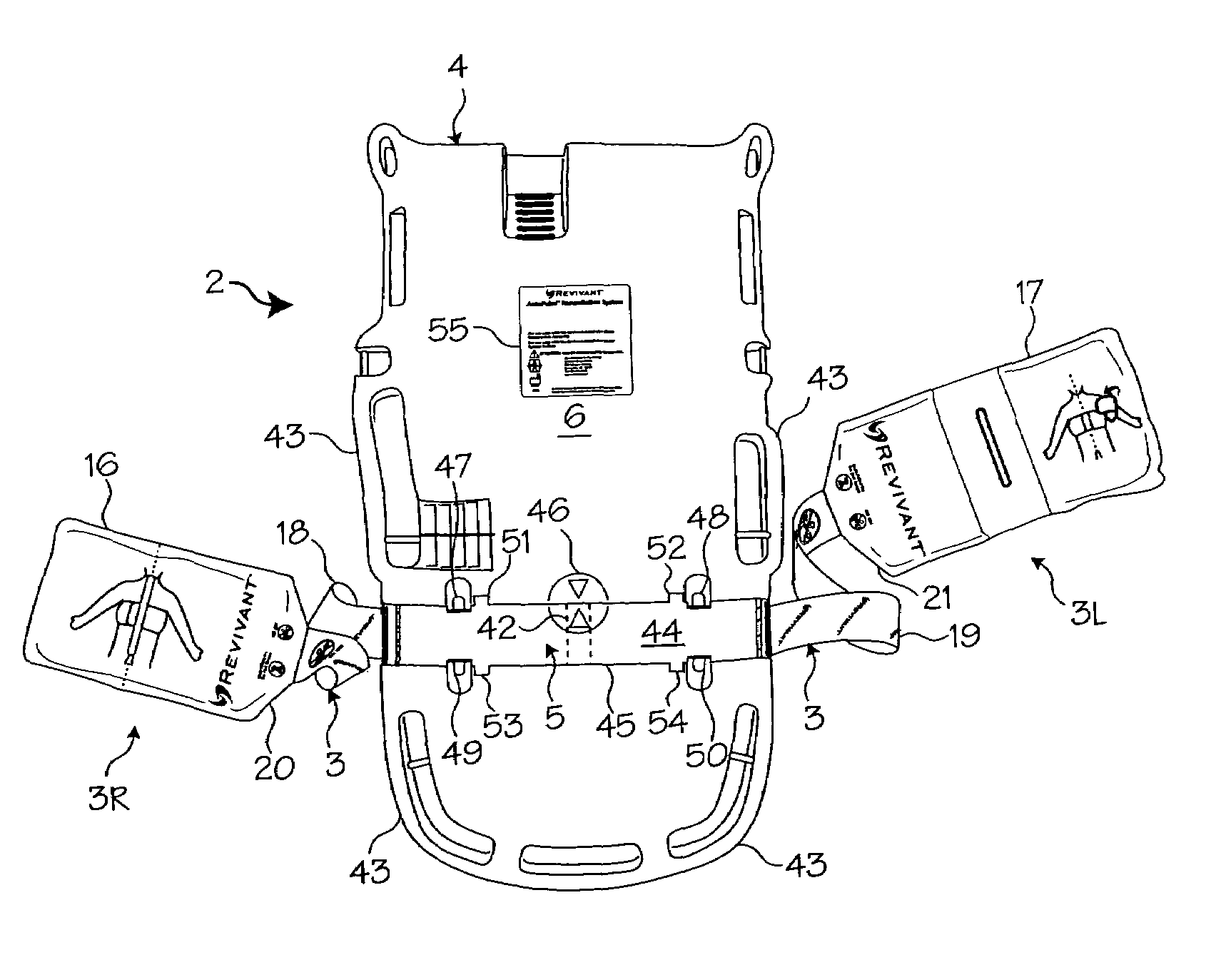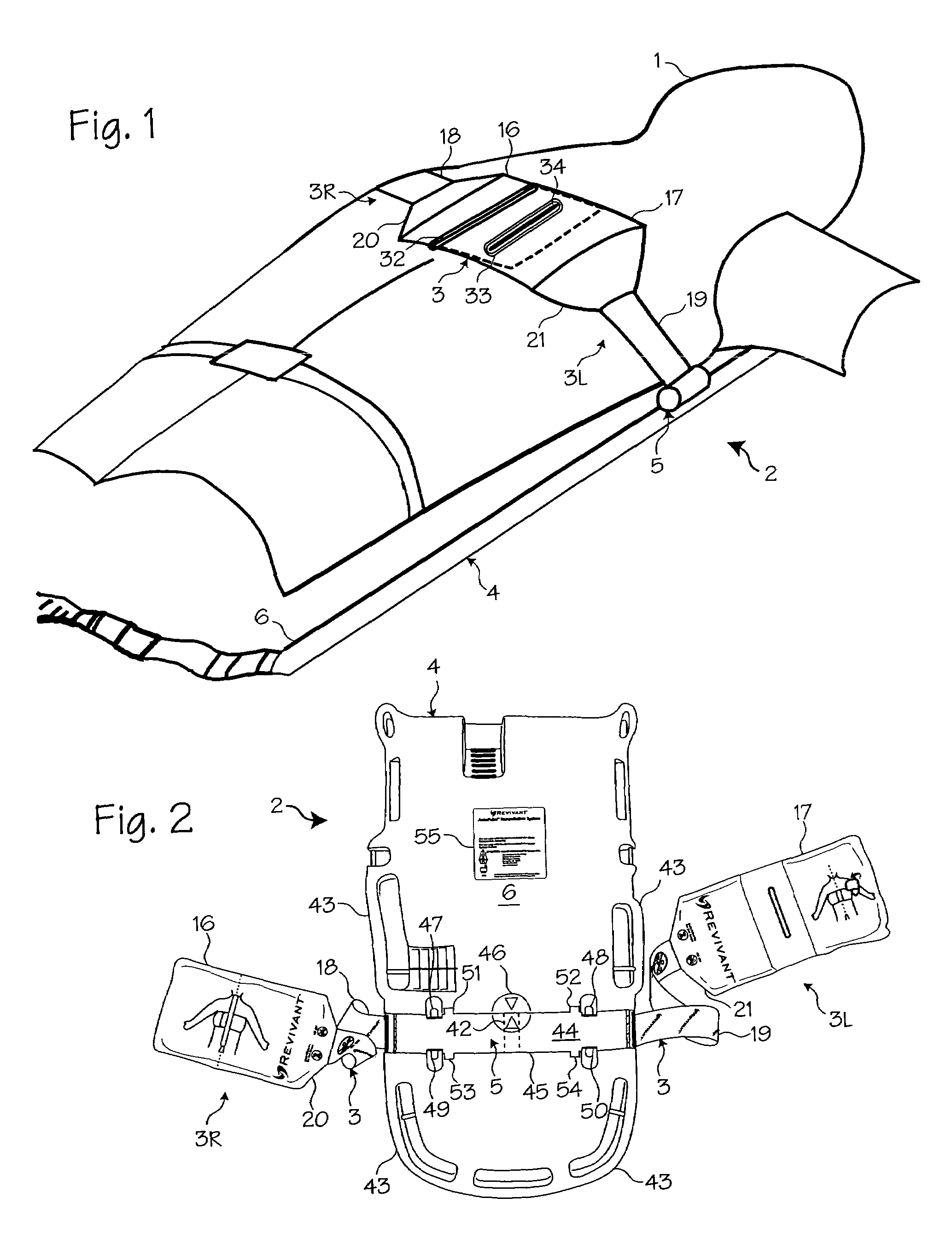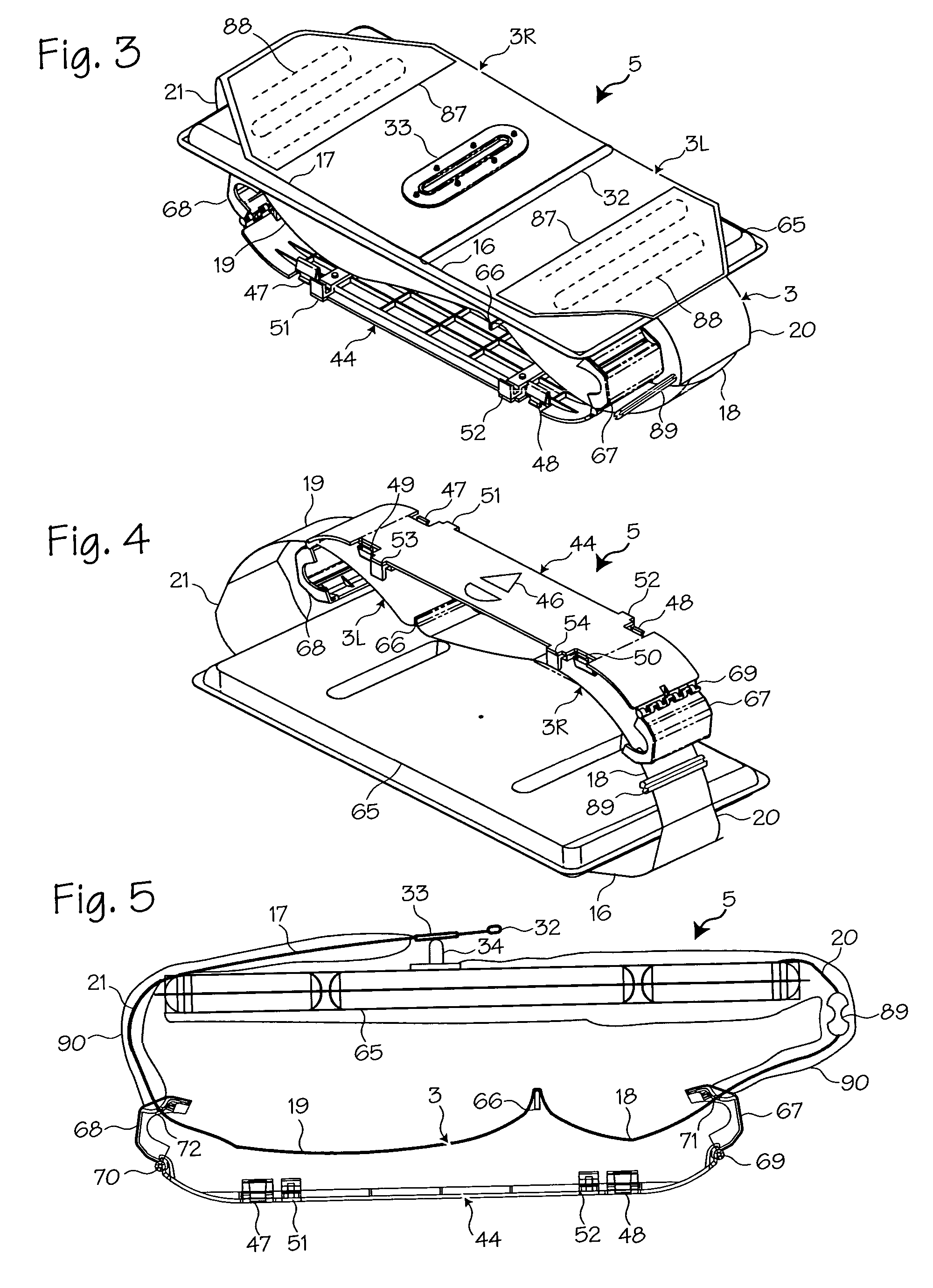Methods and devices for attaching a belt cartridge to a chest compression device
a belt cartridge and compression device technology, applied in the field of emergency medical devices and methods and the resuscitation of cardiac arrest patients, can solve the problems of inability to maintain adequate chest compressions for more than a few minutes, and the failure of cpr to sustain or revive the patien
- Summary
- Abstract
- Description
- Claims
- Application Information
AI Technical Summary
Benefits of technology
Problems solved by technology
Method used
Image
Examples
Embodiment Construction
[0018]FIG. 1 shows the chest compression belt fitted on a patient 1. A chest compression device 2 applies compressions with the belt 3, which has a right belt portion 3R and a left belt portion 3L. The chest compression device 2 includes a belt drive platform 4 and a compression belt cartridge 5 (which includes the belt). The belt drive platform includes a housing 6 upon which the patient rests, a means for tightening the belt, a processor and a user interface disposed on the housing. The means for tightening the belt includes a motor, a drive train (clutch, brake and / or gear box) and a drive spool upon which the belt spools during use. Various other mechanisms may be used to tighten the belt, including the mechanisms shown in Lach et al., Resuscitation Method and Apparatus, U.S. Pat. No. 4,774,160 (Sep. 13, 1988) and in Kelly et al., Chest Compression Apparatus for Cardiac Arrest, U.S. Pat. No. 5,738,637 (Apr. 14, 1998). The entirety of these patents is hereby incorporated by refer...
PUM
 Login to View More
Login to View More Abstract
Description
Claims
Application Information
 Login to View More
Login to View More - R&D
- Intellectual Property
- Life Sciences
- Materials
- Tech Scout
- Unparalleled Data Quality
- Higher Quality Content
- 60% Fewer Hallucinations
Browse by: Latest US Patents, China's latest patents, Technical Efficacy Thesaurus, Application Domain, Technology Topic, Popular Technical Reports.
© 2025 PatSnap. All rights reserved.Legal|Privacy policy|Modern Slavery Act Transparency Statement|Sitemap|About US| Contact US: help@patsnap.com



